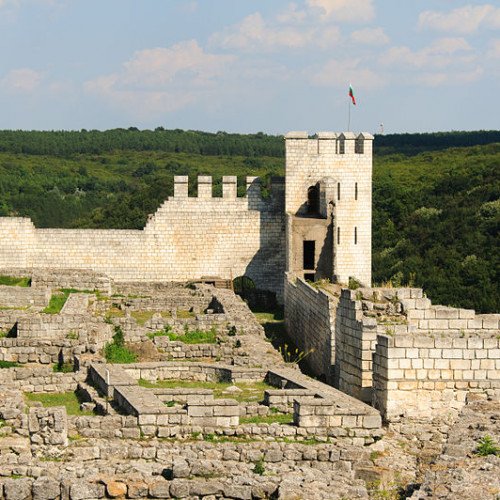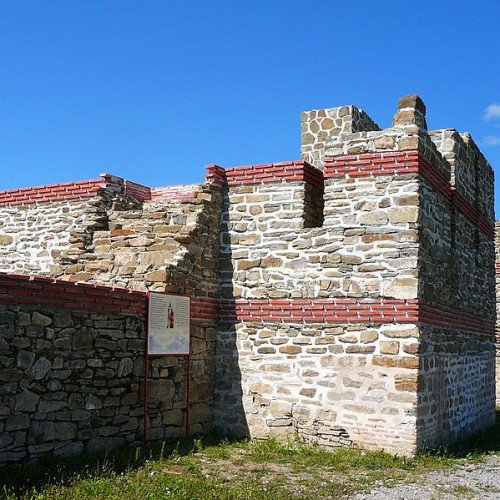Castles of "Bulgaria" SHUMEN FORTRESS vs SOSTRA

SHUMEN FORTRESS
The Shumen fortress (Bulgarian: Шуменска крепост, Shumenska krepost) is an archaeological site overlooking the city of Shumen in north-eastern Bulgaria. It is an ancient fortress with historical links to a village nearby traced to early Iron Age and later owned by the Thracians in the 5th century BC. Then, from 2nd to 4th centuries AD, it was controlled by the Romans who built towers and walls, and it was refurbished by the Byzantines as their garrison town. Shumen thrived in the Middle Ages as an important stronghold of the Bulgarian Empire. In 1444 the fort was destroyed by the Ottomans after their victory in the Battle of Varna over a Christian army under Władysław III of Poland. The fortress remained deserted ever since. Restoration works on the fortress commenced in 2012 under the project titled “Bulgaria Begins Here”, and was completed partially in 2015 with financial assistance provided under the European Economic Area (EEA) and Norway Grants to the Shumen Municipality and the Shumen Regional Museum of History.
Statistics for this Xoptio

SOSTRA
Sostra is an ancient Roman fort and settlement near the village of Lomets, Bulgaria. Impressive remains have been excavated and partially restored. Sostra was strategically situated along the major Roman road (the Via Traiana) linking ancient Philippopolis (today’s Plovdiv) and Diocletianopolis in the Roman province of Thrace with the Roman outposts on the Limes Moesiae on the Danube such as Ulpia Oescus (near today’s Gigen) and Novae (near today’s Shishtov) via the Troyan Pass in the Balkan Mountains. The road was vital in Trajan's Dacian Wars against the Thracian tribes north of the Danube, and later became more important as a main artery of the province. The museum in Troyan contains several finds from the site. The site was first settled based on a mansio or road station from around 100 AD. Sostra fort was built around 147 AD at the order of Roman Emperor Antoninus Pius. The cohort II Mattiacorum of around 1000 soldiers (milliaria) was stationed here according to a statue base found in the principia, after being based at Sexaginta Prista (present-day Ruse) until 145 AD. The settlement (or vicus) to the west and east of the fort gradually grew into a town with a civilian population. In 175 the road was improved under Marcus Aurelius, according to milestone inscriptions, leading to increased passing traffic and trade. It became a paved dual-width carriageway allowing two-way traffic.